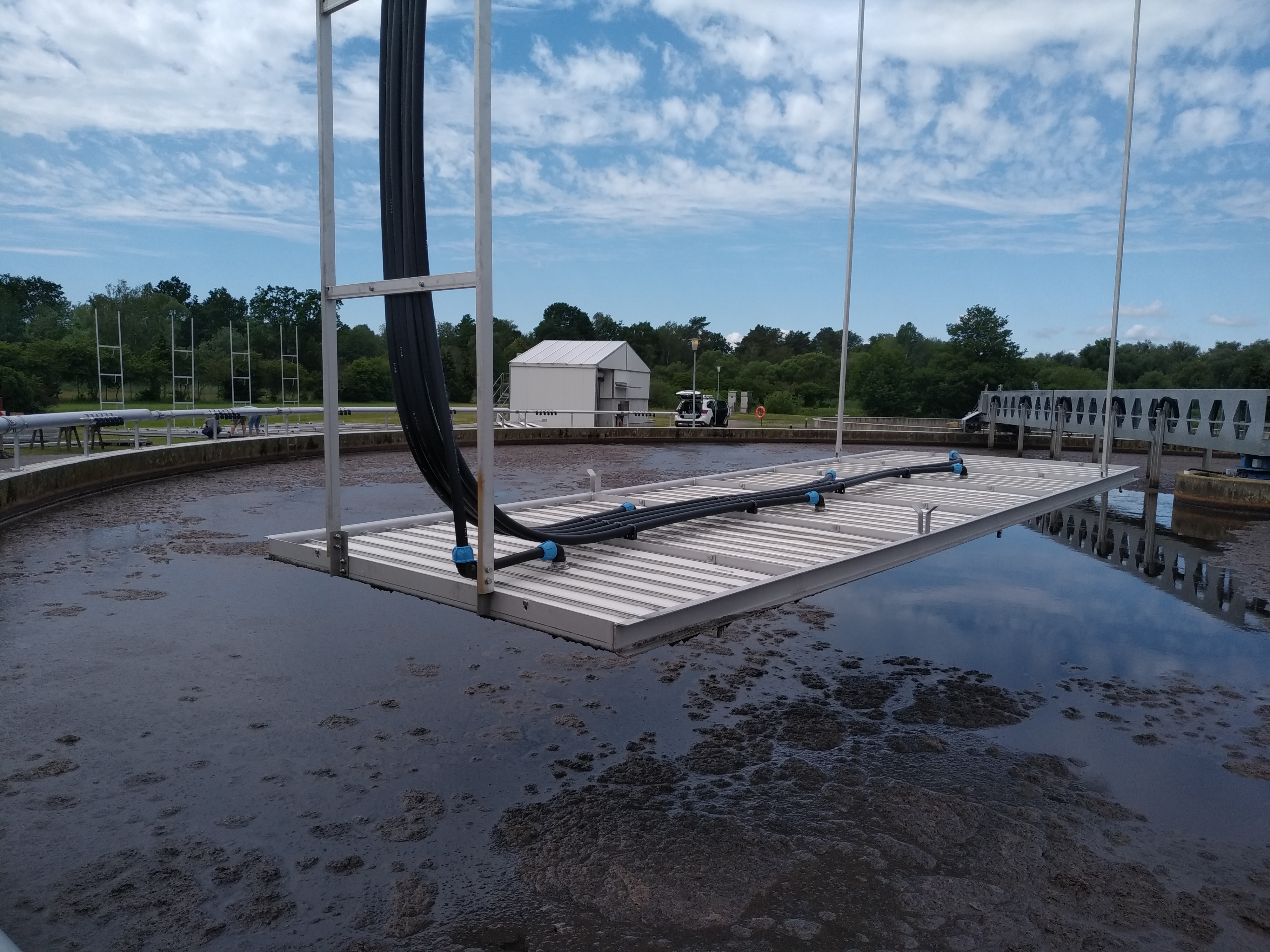TAV Liebenwalde - Sewage sludge humification

Wastewater is carefully treated in a sewage plant. The clean water is returned to the natural cycle while sewage sludge remains. This sludge is then dewatered, a process that consumes considerable amounts of energy. An alternative technology is now being established at the association for wastewater treatment TAV Liebenwalde.
The TAV operates a sewage treatment plant in Liebenwalde, which purifies the domestic wastewater of around 15,000 people. The sewage sludge produced during purification is recycled at the end of the process, for example, as fertiliser for agriculture or incinerated to generate electricity and heat. Since this kind of recycling does not usually take place on the premises of the sewage treatment plant, suitable transport procedures are needed. In order to minimise the number of transports and therefore CO2 emissions, water can be removed from the sewage sludge in various processes in order to reduce the total volume. The sewage sludge humification plant offers a suitable process.
What exactly happens at the plant?
With the help of grants from the European Regional Development Fund (ERDF), the TAV Liebenwalde has commissioned the construction of a sewage sludge humification plant with four humification beds next to its own sewage treatment plant. These beds will be planted with reeds which will promote evaporation of the sludge water. The systems used at the sewage treatment plant to dewater sludge have seen better days, they require considerable maintenance and repair work and are unable to achieve any significant reduction in volume. This meant that in the recent past around 250 tours per year (carrying about 22 m³ of sewage sludge each time) were needed to dispose of the sludge. In addition, changes in legislation have made the agricultural use of sewage sludge more difficult. This was one of the reasons why the TAV had to act and finally decided to build this plant.
From sewage sludge to a natural biotope
The project is special for the TAV Liebenwalde in several ways. Since the sewage treatment plant was built, this is the first investment of this dimension. Moreover, the examination of possible alternatives for disposal showed that humification is a particularly ecological approach. Apart from cutting climate-relevant gases, the reed-overgrown humification beds create a valuable biotope, both for many insects and for various bird species.
The TAV has done it again
This is not the first time that the TAV in Liebenwalde has used ERDF funding. The aeration system of the sewage treatment plant is currently being modernised, which will boost the efficiency of wastewater treatment. In addition, the construction of a photovoltaic system is set to begin in spring 2020.
For further information, visit www.tav-liebenwalde.de
The TAV operates a sewage treatment plant in Liebenwalde, which purifies the domestic wastewater of around 15,000 people. The sewage sludge produced during purification is recycled at the end of the process, for example, as fertiliser for agriculture or incinerated to generate electricity and heat. Since this kind of recycling does not usually take place on the premises of the sewage treatment plant, suitable transport procedures are needed. In order to minimise the number of transports and therefore CO2 emissions, water can be removed from the sewage sludge in various processes in order to reduce the total volume. The sewage sludge humification plant offers a suitable process.
What exactly happens at the plant?
With the help of grants from the European Regional Development Fund (ERDF), the TAV Liebenwalde has commissioned the construction of a sewage sludge humification plant with four humification beds next to its own sewage treatment plant. These beds will be planted with reeds which will promote evaporation of the sludge water. The systems used at the sewage treatment plant to dewater sludge have seen better days, they require considerable maintenance and repair work and are unable to achieve any significant reduction in volume. This meant that in the recent past around 250 tours per year (carrying about 22 m³ of sewage sludge each time) were needed to dispose of the sludge. In addition, changes in legislation have made the agricultural use of sewage sludge more difficult. This was one of the reasons why the TAV had to act and finally decided to build this plant.
From sewage sludge to a natural biotope
The project is special for the TAV Liebenwalde in several ways. Since the sewage treatment plant was built, this is the first investment of this dimension. Moreover, the examination of possible alternatives for disposal showed that humification is a particularly ecological approach. Apart from cutting climate-relevant gases, the reed-overgrown humification beds create a valuable biotope, both for many insects and for various bird species.
The TAV has done it again
This is not the first time that the TAV in Liebenwalde has used ERDF funding. The aeration system of the sewage treatment plant is currently being modernised, which will boost the efficiency of wastewater treatment. In addition, the construction of a photovoltaic system is set to begin in spring 2020.
For further information, visit www.tav-liebenwalde.de

